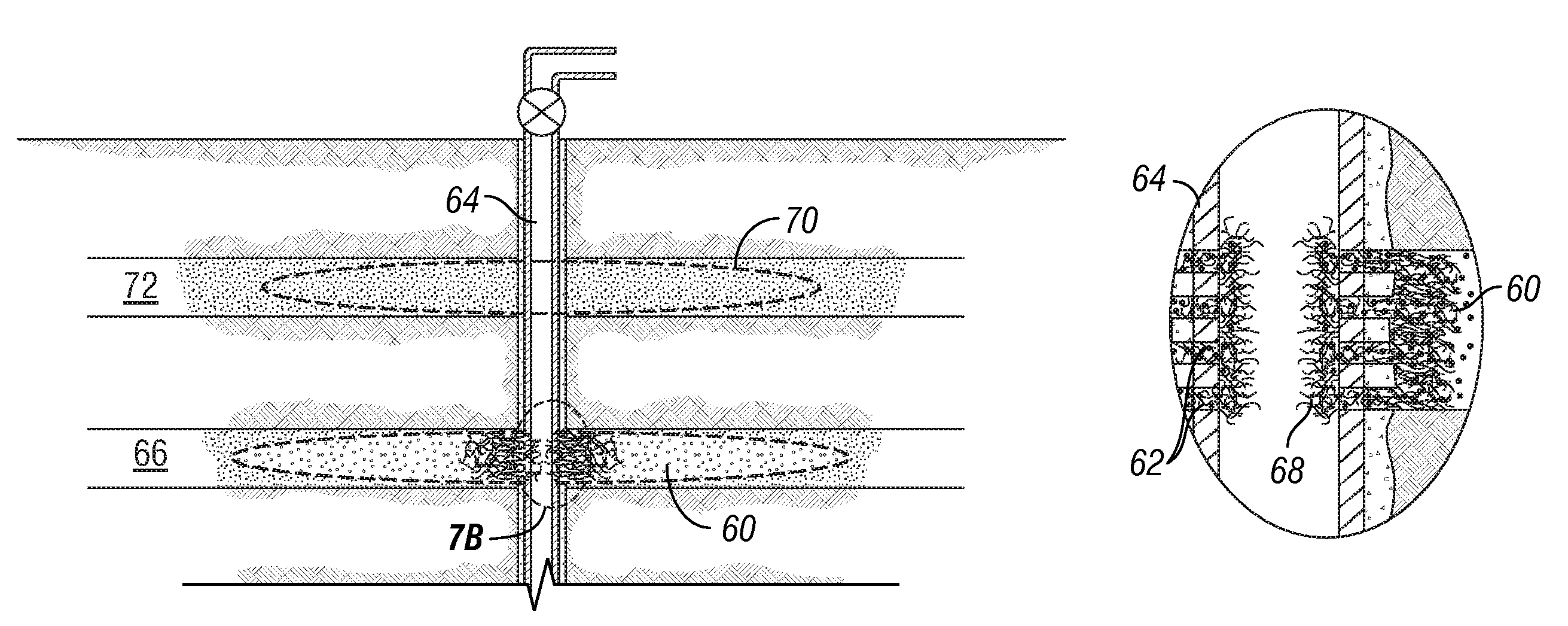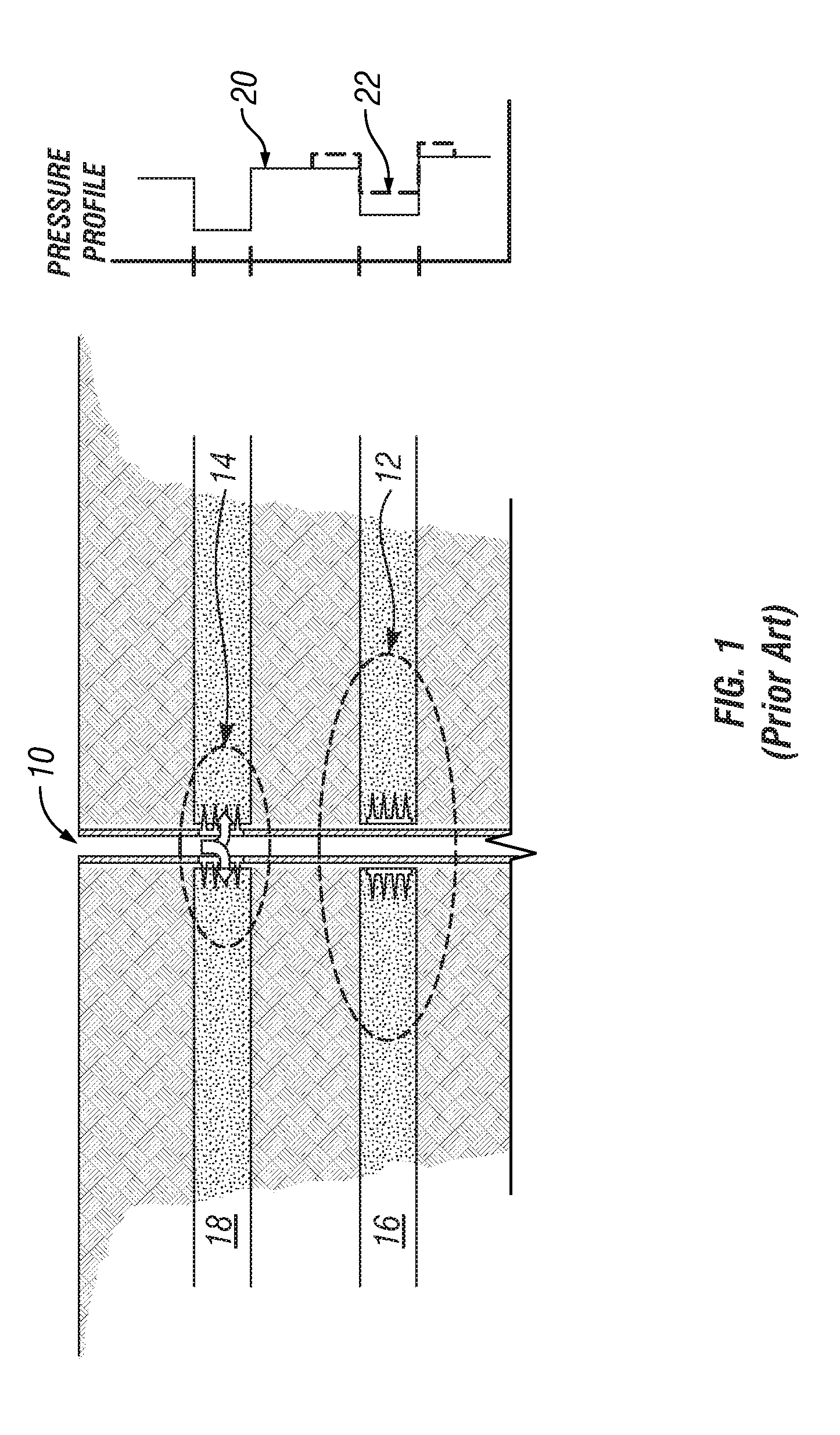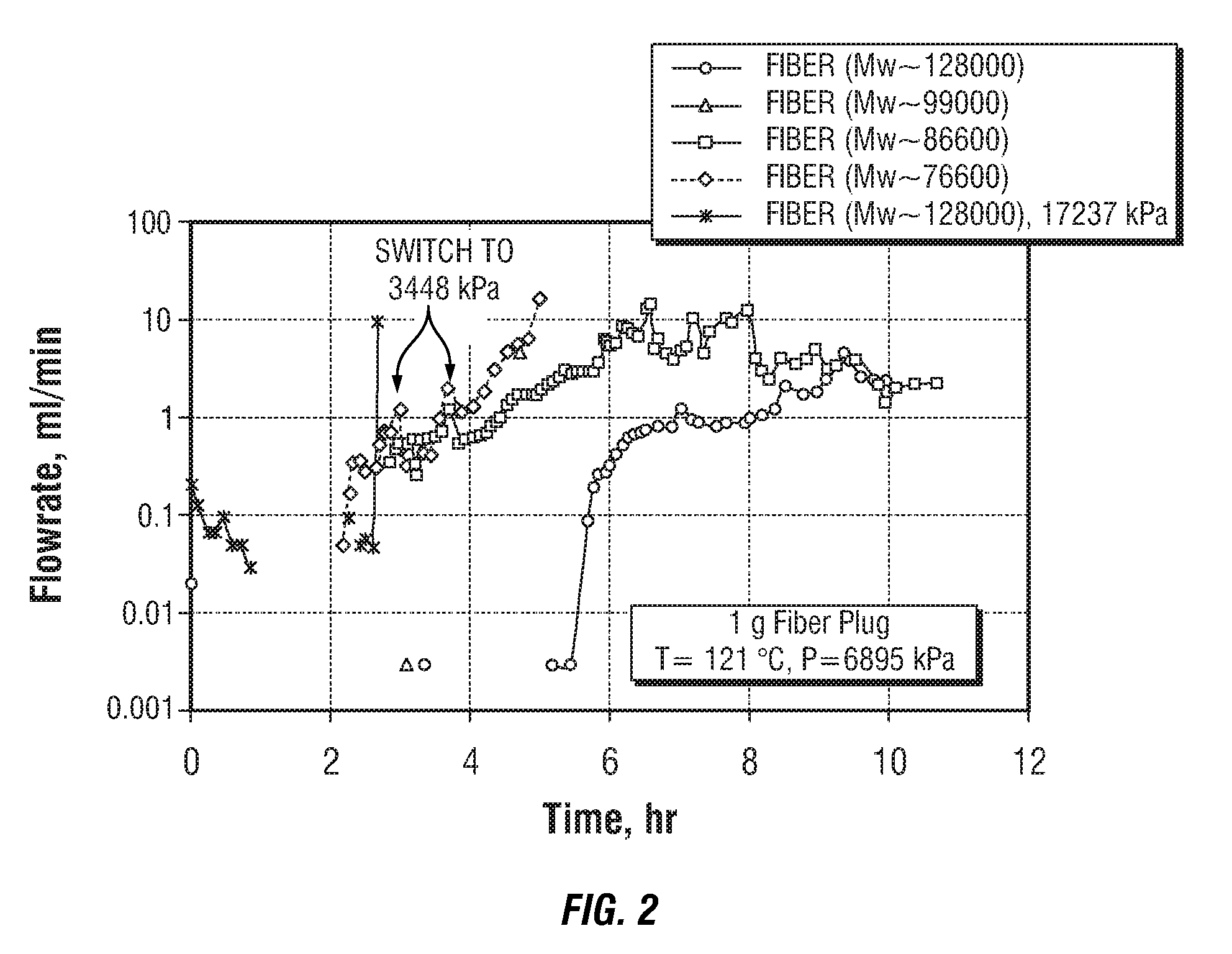Degradable material assisted diversion
a technology of degradable materials and diversion procedures, applied in the direction of borehole/well accessories, folding cabinets, cabinets, etc., can solve the problems of insufficient fracture closure, inability to completely close the fracture, and inability to completely diversion wells, etc., to achieve the effect of facilitating the diversion procedur
- Summary
- Abstract
- Description
- Claims
- Application Information
AI Technical Summary
Benefits of technology
Problems solved by technology
Method used
Image
Examples
example 1
Polymeric Friction Reducer Fluid
[0118]A polymeric friction reducer formulation (Fluid 1) for use in a well treatment according to the invention was prepared by pumping 1 liter per cubic meter (L / m3) (1 gallon per thousand gallons, gpt) of a polymeric friction reducer concentrate to a flow stream of water. The polymeric friction reducer was a formulation containing 28 weight percent of a polyacrylamide derivative friction reducer, 30 weight percent petroleum distillates, 3.5 weight percent ethoxylated alcohol, and 38.5 weight percent water.
example 2
VES Fracturing Fluid
[0119]A viscoelastic surfactant fracturing fluid (Fluid 2) for use in a well treatment of the invention was prepared by pumping 25 L / m3 (25 gpt) of a surfactant concentrate obtained from Rhodia, Inc. Cranbury, New Jersey, U.S.A. and 0.5 weight percent of a partially hydrolyzed polyvinyl acetate derivative concentrate ALCOTEX WD200 (obtained from Synthomer Limited, Harlow, Essex, United Kingdom) to a flow stream of water. The surfactant concentration contained approximately 40 weight percent active erucylamidopropyl betaine and about 1 weight percent of a condensation product of a sodium polynaphthalene sulfonate, with the remainder being substantially water, sodium chloride, and isopropanol. The polyvinyl acetate derivative containing approximately 20 weight percent of a copolymer containing polyvinyl acetate that was approximately 42-45 percent hydrolyzed, having an average molecular weight of about 25,000 and containing less than 2 weight percent methanol.
example 3
SFR Fluid
[0120]A suspending friction reducer formulation (Fluid 3) for use in a well treatment according to the invention was prepared by pumping 4.25 L / m3 (4.25 gpt) of a cetyltrimethyl ammonium chloride concentrate obtained as ARQUAD® 16-50 from Akzo Nobel Surface Chemistry, of Stenungsund, Sweden, and 3.2 Kg / m3 sodium salicylate to a flow stream of water.
PUM
 Login to View More
Login to View More Abstract
Description
Claims
Application Information
 Login to View More
Login to View More - R&D
- Intellectual Property
- Life Sciences
- Materials
- Tech Scout
- Unparalleled Data Quality
- Higher Quality Content
- 60% Fewer Hallucinations
Browse by: Latest US Patents, China's latest patents, Technical Efficacy Thesaurus, Application Domain, Technology Topic, Popular Technical Reports.
© 2025 PatSnap. All rights reserved.Legal|Privacy policy|Modern Slavery Act Transparency Statement|Sitemap|About US| Contact US: help@patsnap.com



